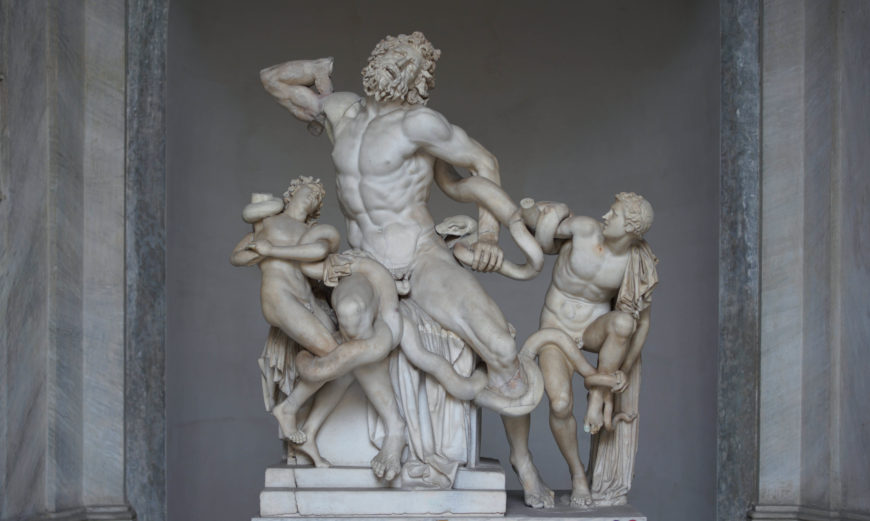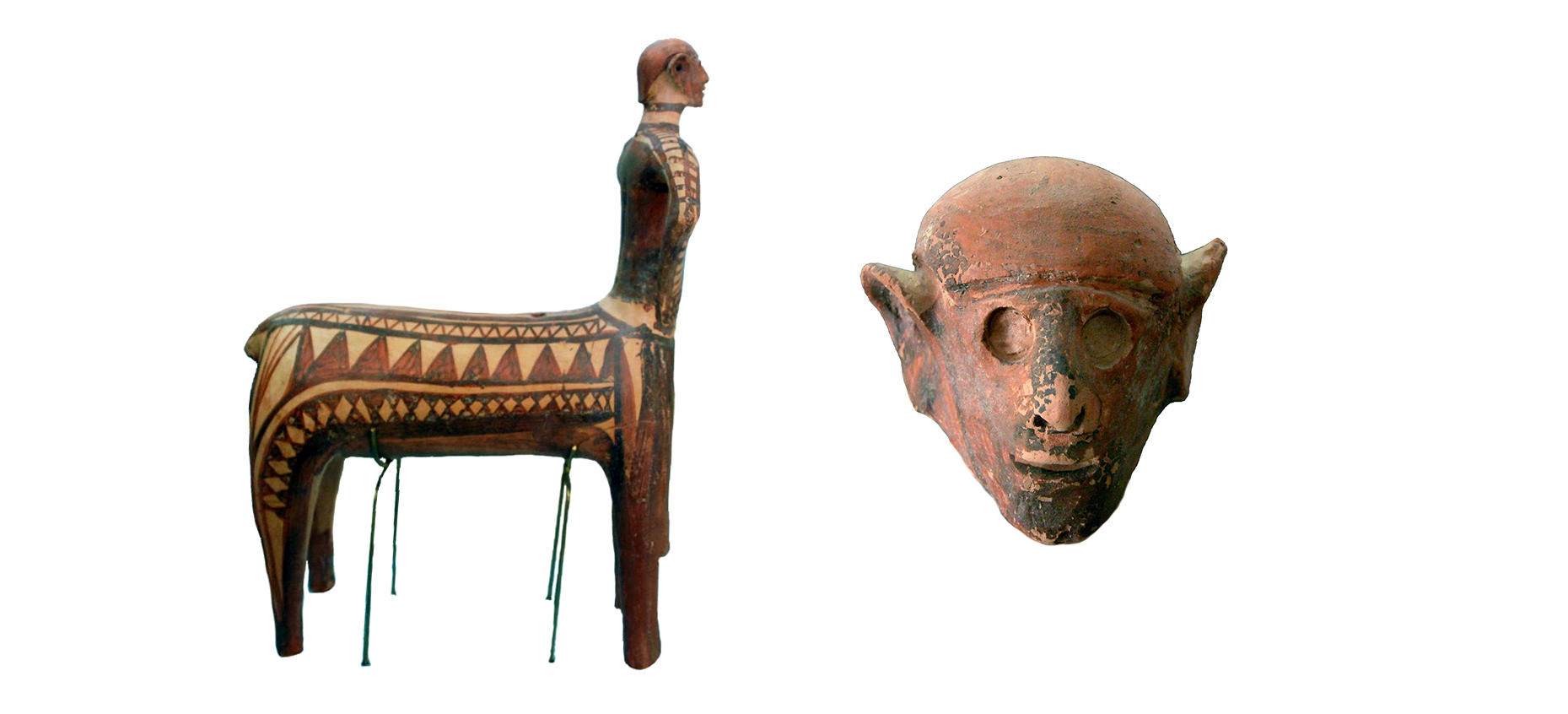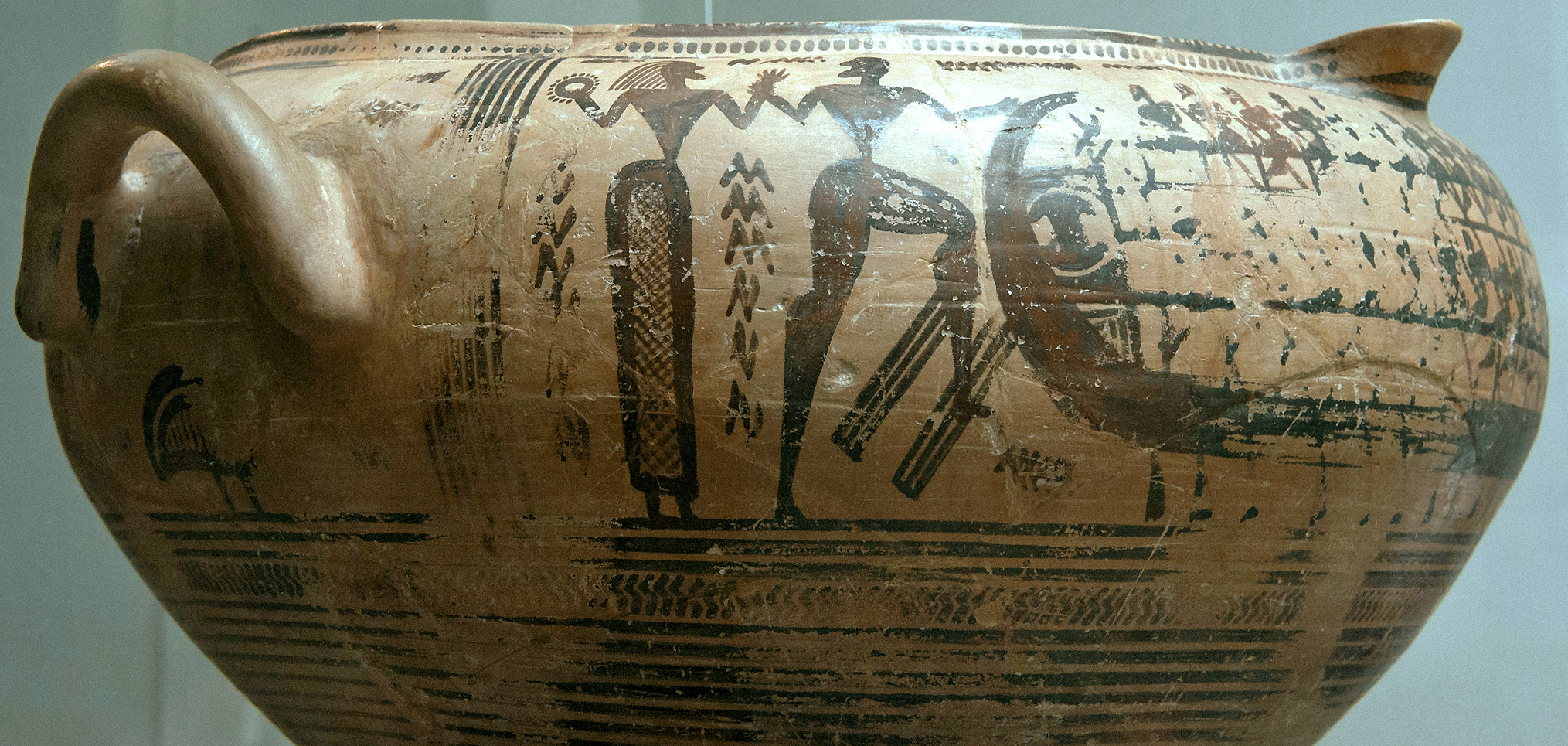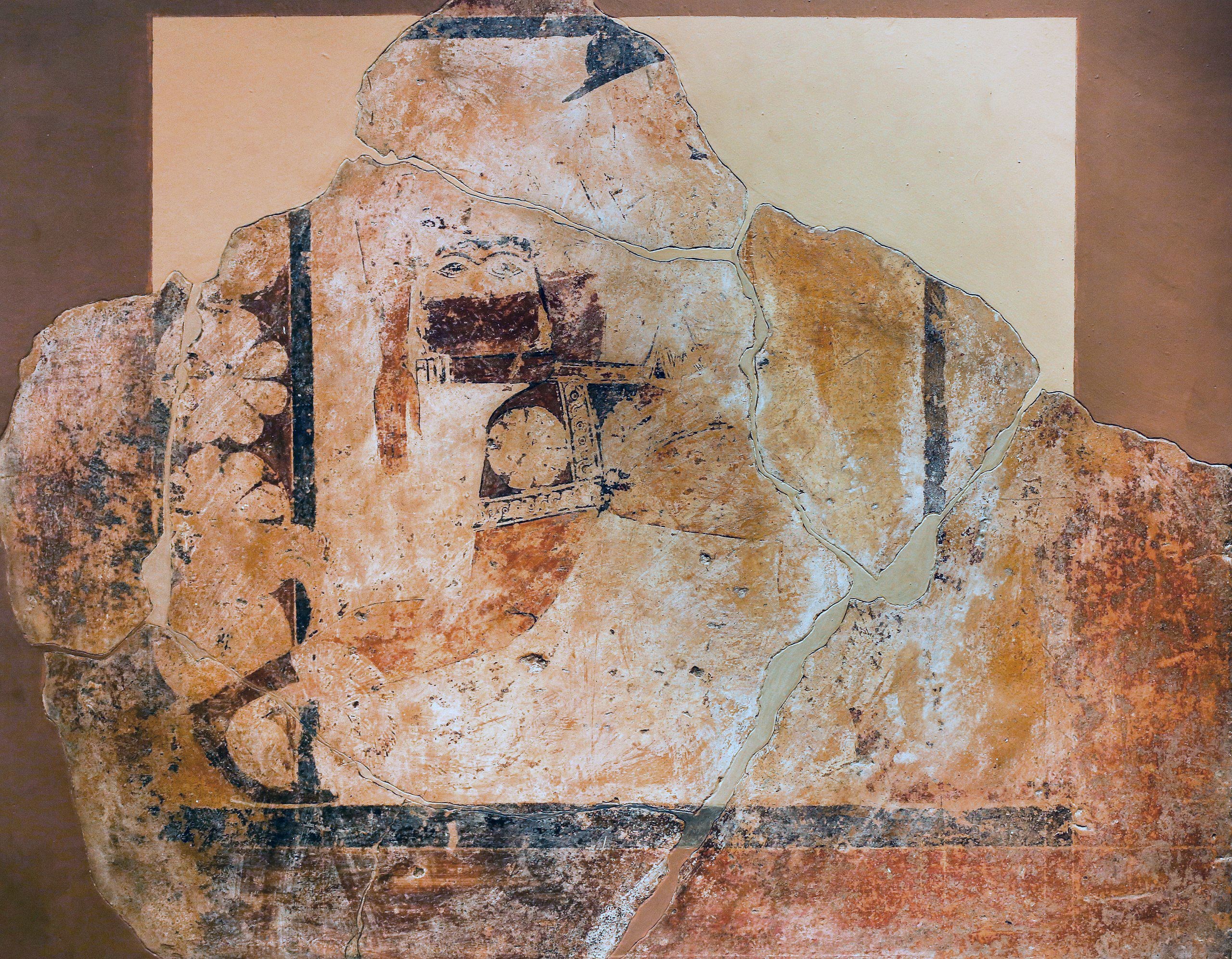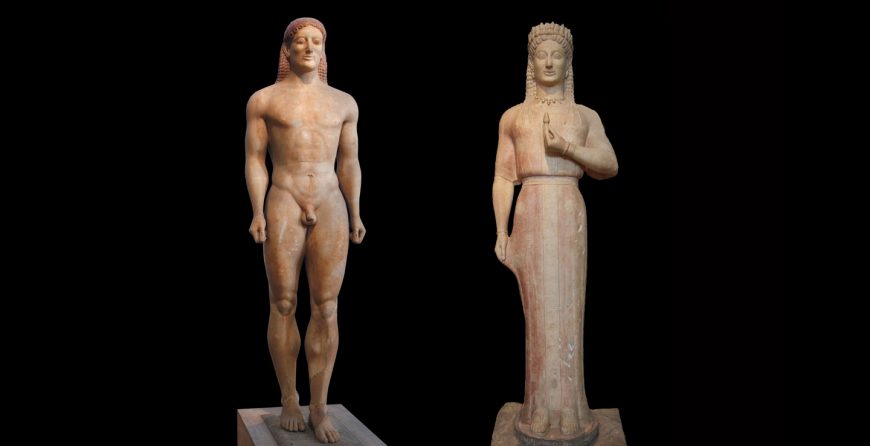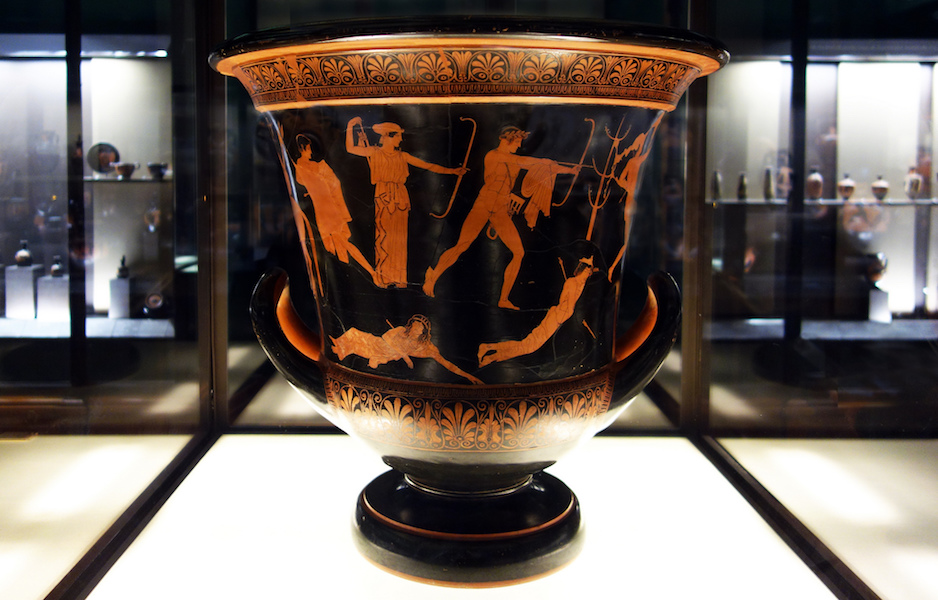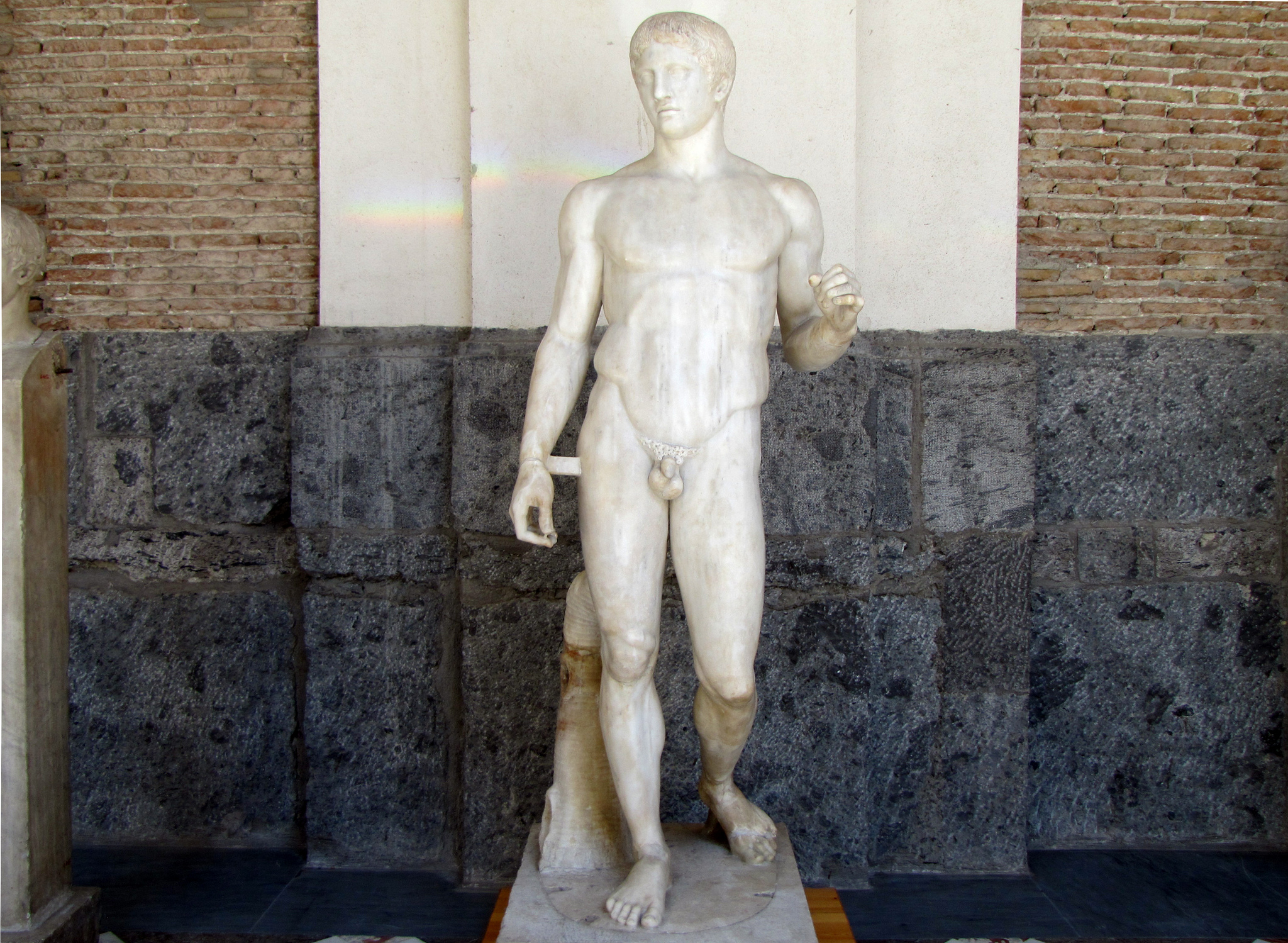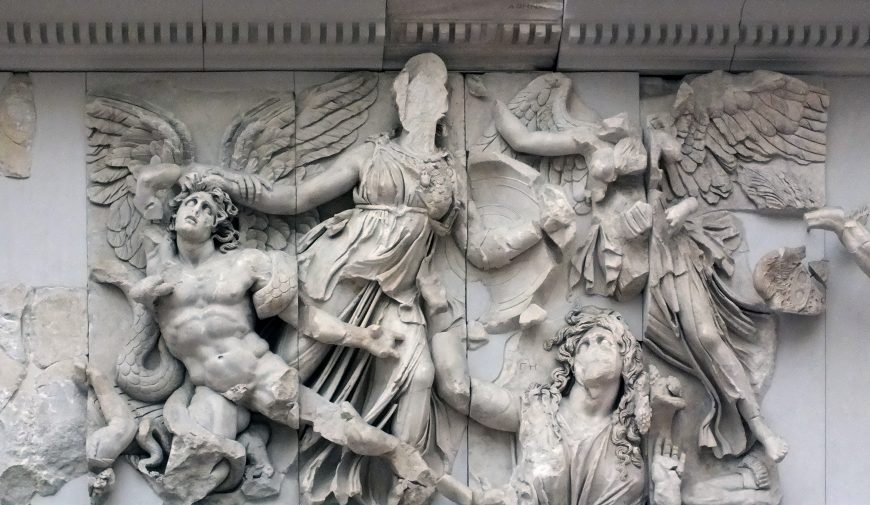3 Greek Art
A shared language, religion, and culture
Ancient Greece can feel strangely familiar. From the exploits of Achilles and Odysseus, to the treatises of Aristotle, from the exacting measurements of the Parthenon to the rhythmic chaos of the Laocoön (below), ancient Greek culture has shaped our world. Thanks largely to notable archaeological sites, well-known literary sources, and the impact of Hollywood (Clash of the Titans, for example), this civilization is embedded in our collective consciousness—prompting visions of epic battles, erudite philosophers, gleaming white temples, and limbless nudes (we now know the sculptures—even the ones that decorated temples like the Parthenon—were brightly painted, and, of course, the fact that the figures are often missing limbs is the result of the ravages of time).
Dispersed around the Mediterranean and divided into self-governing units called poleis or city-states, the ancient Greeks were united by a shared language, religion, and culture. Strengthening these bonds further were the so-called “Panhellenic” sanctuaries and festivals that embraced “all Greeks” and encouraged interaction, competition, and exchange (for example the Olympics, which were held at the Panhellenic sanctuary at Olympia). Although popular modern understanding of the ancient Greek world is based on the classical art of fifth century B.C.E. Athens, it is important to recognize that Greek civilization was vast and did not develop overnight.
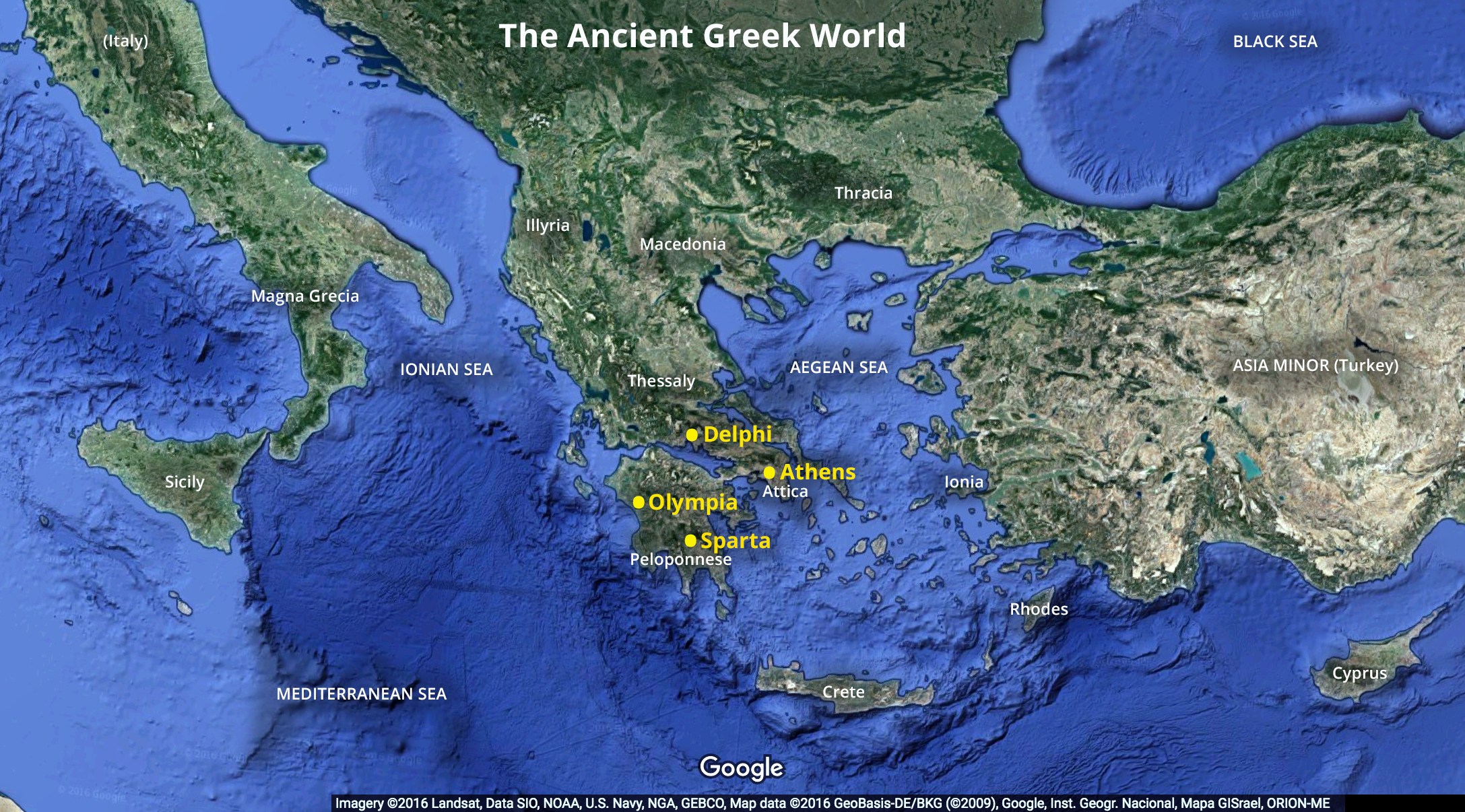
The Dark Ages (c. 1100–c. 800 B.C.E.) to the Orientalizing Period (c. 700–600 B.C.E.)
Following the collapse of the Mycenaean citadels of the late Bronze Age, the Greek mainland was traditionally thought to enter a “Dark Age” that lasted from c. 1100 until c. 800 B.C.E. Not only did the complex socio-cultural system of the Mycenaeans disappear, but also its numerous achievements (i.e., metalworking, large-scale construction, writing). The discovery and continuous excavation of a site known as Lefkandi, however, drastically alters this impression. Located just north of Athens, Lefkandi has yielded an immense apsidal structure (almost fifty meters long), a massive network of graves, and two heroic burials replete with gold objects and valuable horse sacrifices. One of the most interesting artifacts, ritually buried in two separate graves, is a centaur figurine (see photos below). At fourteen inches high, the terracotta creature is composed of a equine (horse) torso made on a potter’s wheel and hand-formed human limbs and features. Alluding to mythology and perhaps a particular story, this centaur embodies the cultural richness of this period.
Similar in its adoption of narrative elements is a vase-painting likely from Thebes dating to c. 730 B.C.E. (see image below). Fully ensconced in the Geometric Period (c. 800–700 B.C.E.), the imagery on the vase reflects other eighth-century artifacts, such as the Dipylon Amphora, with its geometric patterning and silhouetted human forms. Though simplistic, the overall scene on this vase seems to record a story. A man and woman stand beside a ship outfitted with tiers of rowers. Grasping at the stern and lifting one leg into the hull, the man turns back towards the female and takes her by the wrist.
In the Orientalizing Period (700–600 B.C.E.), alongside Near Eastern motifs and animal processions, craftsmen produced more nuanced figural forms and intelligible illustrations. For example, terracotta painted plaques from the Temple of Apollo at Thermon (c. 625 B.C.E.) are some of the earliest evidence for architectural decoration in Iron Age Greece. Once ornamenting the surface of this Doric temple (most likely as metopes), the extant panels have preserved various imagery. On one plaque (see image below), a male youth strides towards the right and carries a significant attribute under his right arm—the severed head of the Gorgon Medusa (her face is visible between the right hand and right hip of the striding figure, in Greek mythology a Gorgon is a monstrous feminine creature whose appearance would turn anyone who laid eyes upon it to stone).. Not only is the painter successful here in relaying a particular story, but also the figure of Perseus shows great advancement from the previous century. The limbs are fleshy, the facial features are recognizable, and the hat and winged boots appropriately equip the hero for fast travel.
The Archaic Period (c. 600–480/479 B.C.E.)
While Greek artisans continued to develop their individual crafts, storytelling ability, and more realistic portrayals of human figures throughout the Archaic Period, the city of Athens witnessed the rise and fall of tyrants and the introduction of democracy by the statesman Kleisthenes in the years 508 and 507 B.C.E.
Visually, the period is known for large-scale marble kouros (male youth) and kore (female youth) sculptures (see below). Showing the influence of ancient Egyptian sculpture, the kouros stands rigidly with both arms extended at the side and one leg advanced. Frequently employed as grave markers, these sculptural types displayed unabashed nudity, highlighting their complicated hairstyles and abstracted musculature (below left). The kore, on the other hand, was never nude. Not only was her form draped in layers of fabric, but she was also ornamented with jewelry and adorned with a crown. Though some have been discovered in funerary contexts, like Phrasiklea (below right), a vast majority were found on the Acropolis in Athens. Ritualistically buried following desecration of this sanctuary by the Persians in 480 and 479 B.C.E., dozens of korai were unearthed alongside other dedicatory artifacts. While the identities of these figures have been hotly debated in recent times, most agree that they were originally intended as votive offerings to the goddess Athena.
The Classical Period (480/479–323 B.C.E.)
Though experimentation in realistic movement began before the end of the Archaic Period, it was not until the Classical Period that two- and three-dimensional forms achieved proportions and postures that were naturalistic. The “Early Classical Period” (480/479–450 B.C.E.) was a period of transition when some sculptural work displayed archaizing holdovers alongside the so-called “Severe Style.” As can be seen in the Kritios Boy, c. 480 B.C.E., the “Severe Style” features realistic anatomy, serious expressions, pouty lips, and thick eyelids. For painters, the development of perspective and multiple ground lines enriched compositions, as can be seen on the Niobid Painter’s vase in the Louvre (image below).
During the “High Classical Period” (450–400 B.C.E.), there was great artistic success: from the innovative structures on the Acropolis to Polykleitos’ visual and cerebral manifestation of idealization in his sculpture of a young man holding a spear, the Doryphoros or “Canon” (image below). Concurrently, however, Athens, Sparta, and their mutual allies were embroiled in the Peloponnesian War, a bitter conflict that lasted for several decades and ended in 404 B.C.E. Despite continued military activity throughout the “Late Classical Period” (400–323 B.C.E.), artistic production and development continued apace. In addition to a new figural aesthetic in the fourth century known for its longer torsos and limbs, and smaller heads (for example, the Apoxyomenos), the first female nude was produced. Known as the Aphrodite of Knidos, c. 350 B.C.E., the sculpture pivots at the shoulders and hips into an S-Curve and stands with her right hand over her genitals in a pudica (or modest Venus) pose. Exhibited in a circular temple and visible from all sides, the Aphrodite of Knidos became one of the most celebrated sculptures in all of antiquity.
The Hellenistic Period and Beyond (323 B.C.E.–31 B.C.E.)
Following the death of Alexander the Great in 323 B.C.E., the Greeks and their influence stretched as far east as modern India. While some pieces intentionally mimicked the Classical style of the previous period such as Eutychides’ Tyche of Antioche (Louvre), other artists were more interested in capturing motion and emotion. For example, on the Great Altar of Zeus from Pergamon (below) expressions of agony and a confused mass of limbs convey a newfound interest in drama.
Architecturally, the scale of structures vastly increased, as can be seen with the Temple of Apollo at Didyma, and some complexes even terraced their surrounding landscape in order to create spectacular vistas as can be seem at the Sanctuary of Asklepios on Kos. Upon the defeat of Cleopatra at the Battle of Actium in 31 B.C.E., the Ptolemaic dynasty that ruled Egypt and, simultaneously, the Hellenistic Period came to a close. With the Roman admiration of and predilection for Greek art and culture, however, Classical aesthetics and teachings continued to endure from antiquity to the modern era.
Adapted from “Introduction to Ancient Greek Art” by Dr. Renee M. Gondek for Khan Academy, is licensed CC-BY-NC-SA.
